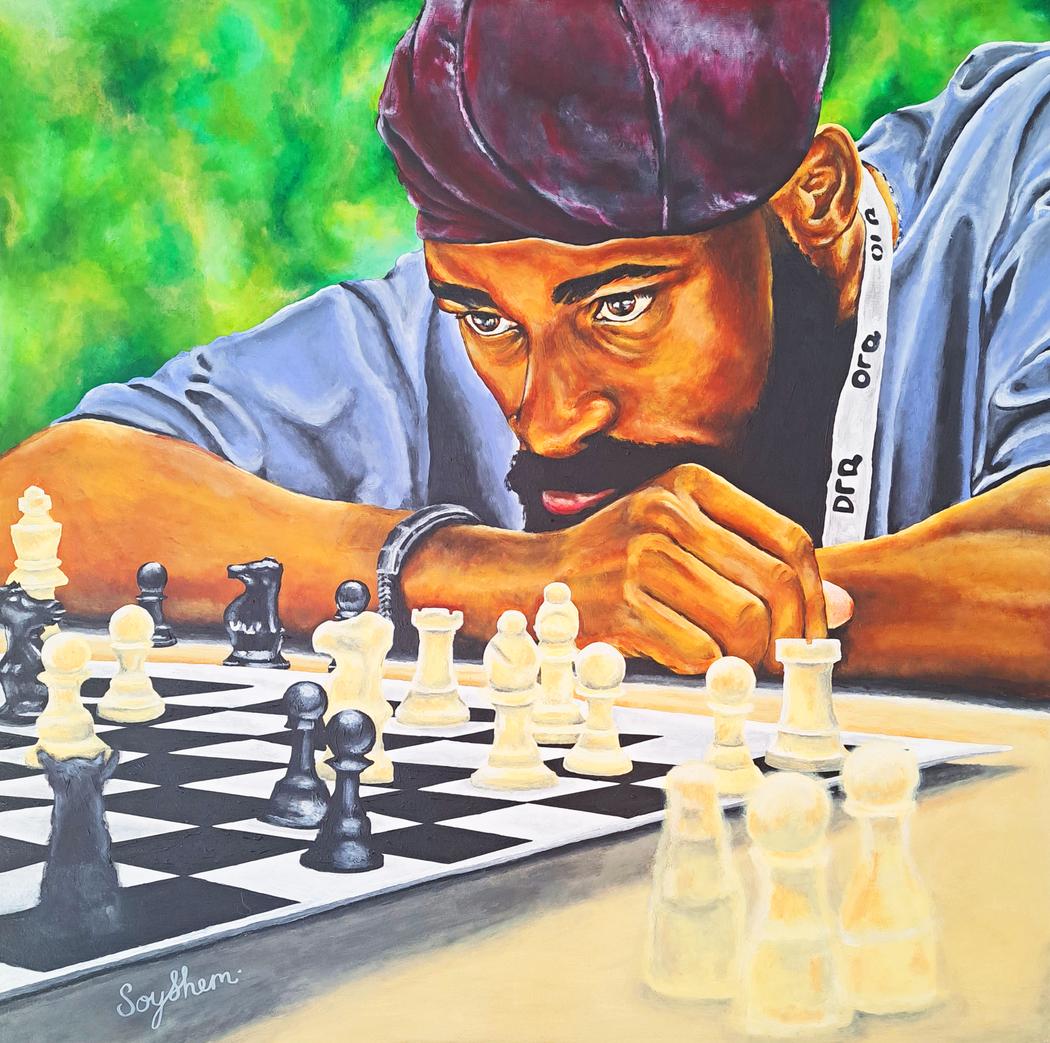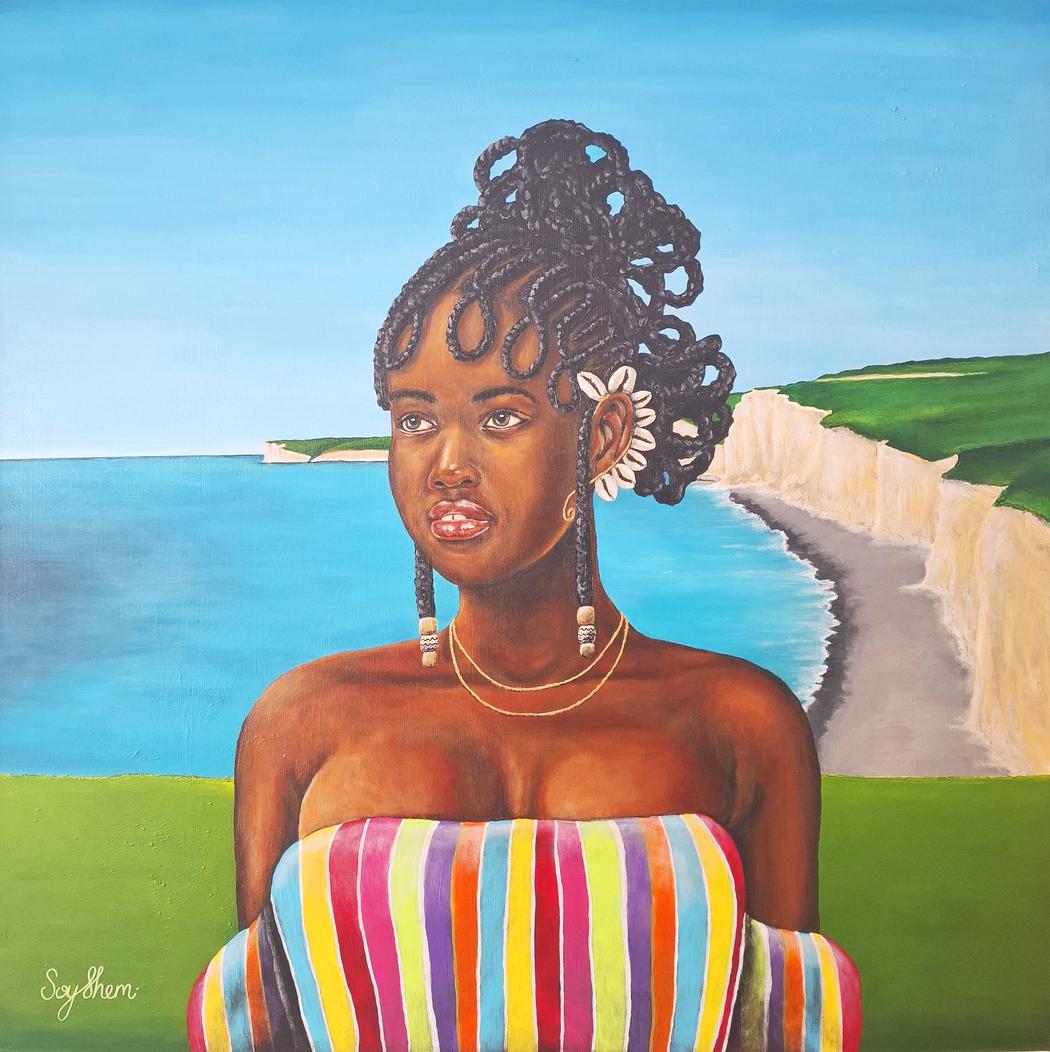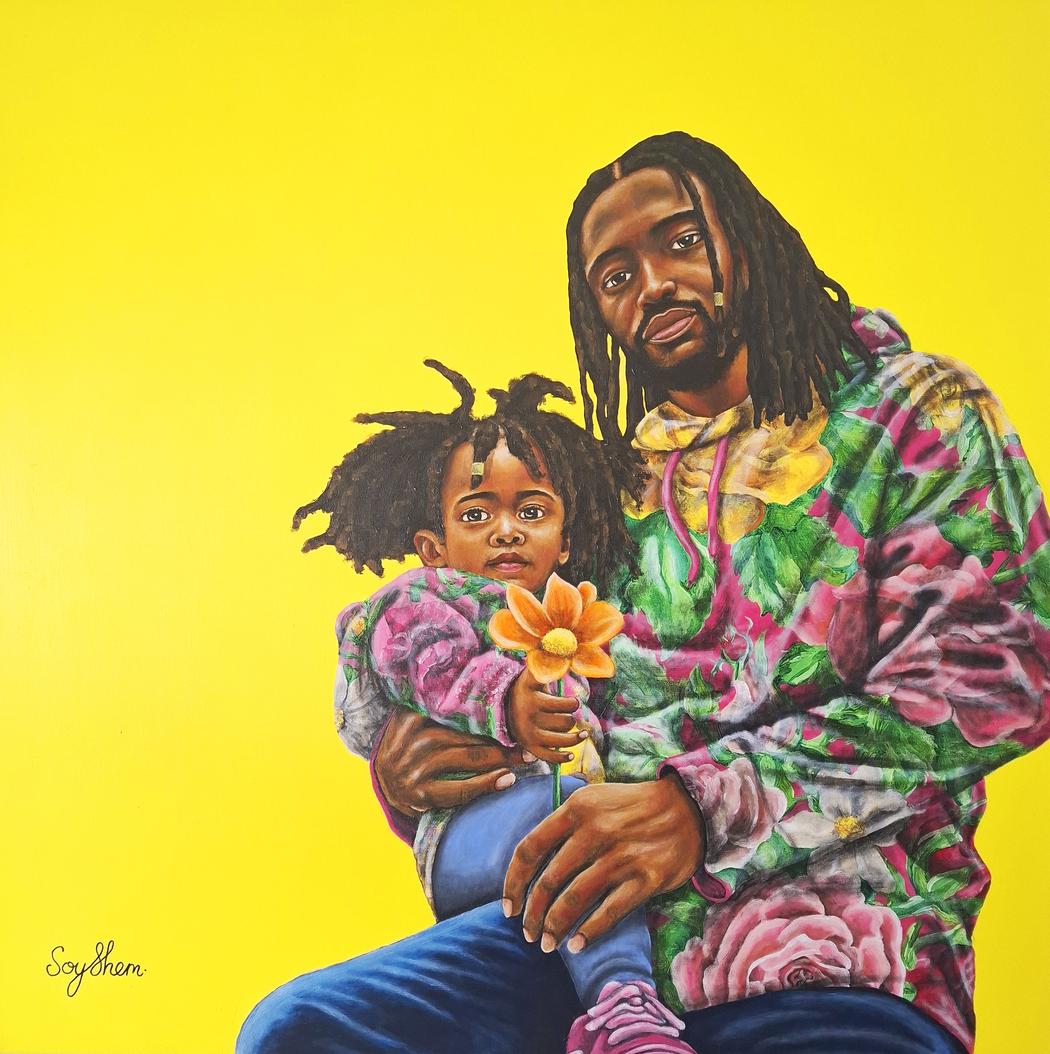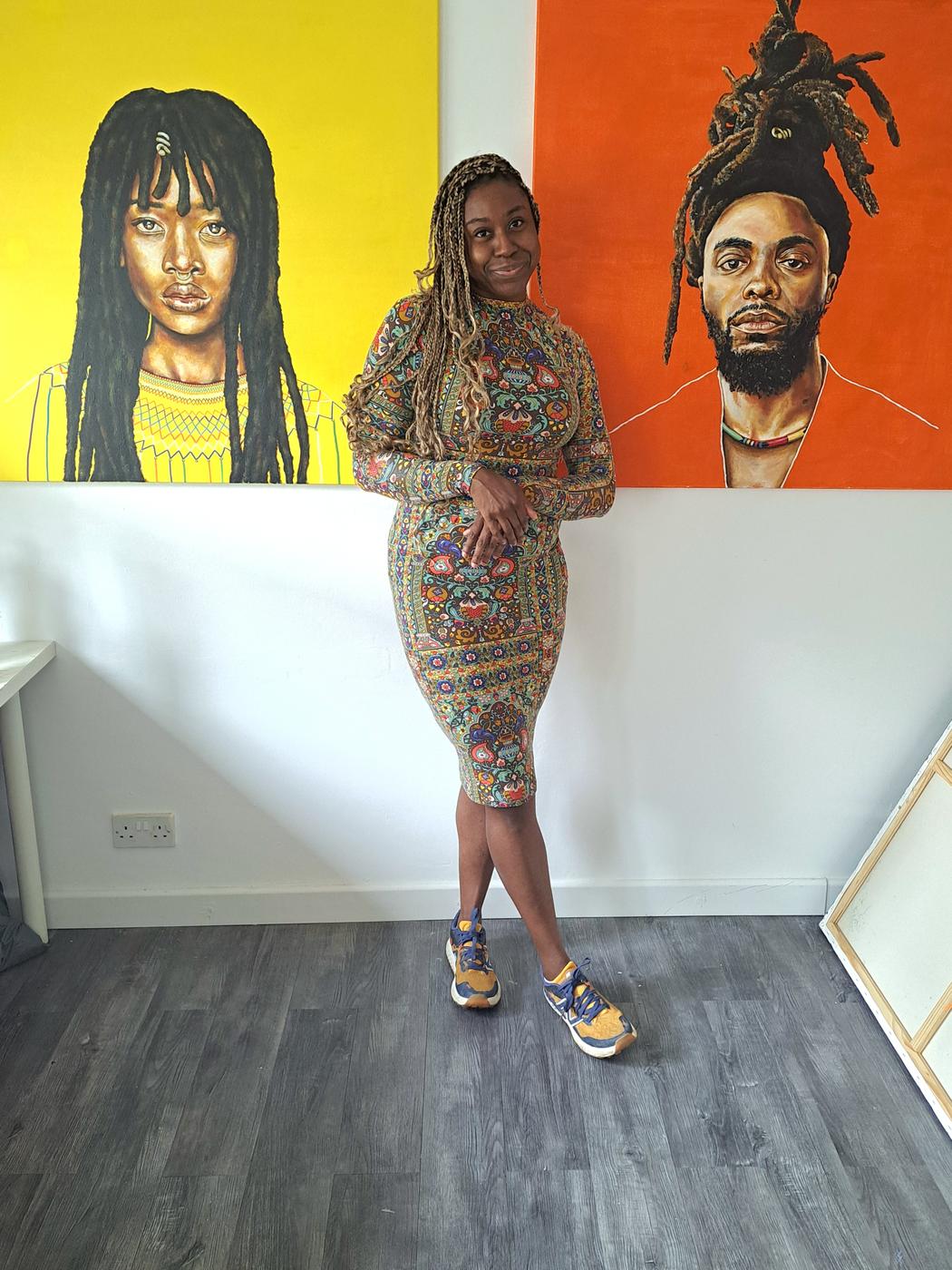SoyShem
Your work beautifully merges African traditions with contemporary themes. How do you decide which elements of tradition to incorporate into a piece?
The main element I incorporate is physical representation. This could either be in the environment I choose to place the person/ people to set the scene e.g. a man playing drums in front of the houses of parliament in Central London, or the contemporary style of attire with an African twist e.g. a Kente print tracksuit, trainers, traditional masks and hairstyles, westernised or African-inspired jewellery etc.
Many of your portraits seem to tell deeply personal stories. Are your characters based on real people, or are they symbolic representations?
They’re a mix of both. Some are inspired by real individuals whose stories move me; others are symbolic expressions drawn from imagination. Take the painting Tunde, for example, it depicts a real Nigerian chess grandmaster who teaches children in rural villages and travels the world to compete. His discipline, determination, and desire to share his gift inspired me to tell his story visually.

You use both acrylic and African print fabric as your canvas. What inspired you to work on printed textiles?
I love patterns, bright and bold colours in general so after visiting various markets and events in different African countries and the wide array of materials they had to represent their cultural traditions, it was a light bulb moment for me to incorporate the fabrics into my artwork to strengthen and reinforce the cultural ties, stories being told and imagery.
Your background is in Interior Architecture. How does that training influence your approach to painting?
Although I chose a different path in life from architecture into visual arts, I am still able to intertwine my training from my degree by using symmetry, geometry, composition, perspectives, scale, and accuracy in detail. I marry the two together by always making the viewer aware of the connection between a person/ people and the space they are in.

Themes of heritage and diaspora are central to your work. How do your Nigerian and Barbadian roots shape your artistic voice?
My identity is shaped by both Nigerian and Barbadian heritage, as well as by growing up in the UK. Rather than choosing one over the other, I embrace all parts of my background. This intersectionality fuels my curiosity about how people preserve culture, adapt to new environments, and define belonging.
The question “What is home?” appears in your artist statement. What does “home” mean to you today?
Coming from a multi-cultural background, I have never really felt that ‘home’ is just a place of region or country, but it can be a person, an object, a favourite food, or even a feeling. I feel at ‘home’ when I am doing what makes me feel the happiest, which is when I am painting.

How do your global travels and experiences influence your storytelling?
Having the opportunity to visit over 20 countries across five continents has fuelled my curiosity and thirst for learning about different cultures, ways of living, and historical events, influencing and informing my approach to what and how I paint. This has evolved my work by allowing me to accumulate a wealth of knowledge and insight, by experiencing the world through everyday people globally. By documenting and journaling these experiences through my work, this has enabled my stories to connect with audiences worldwide.


Leave a Reply